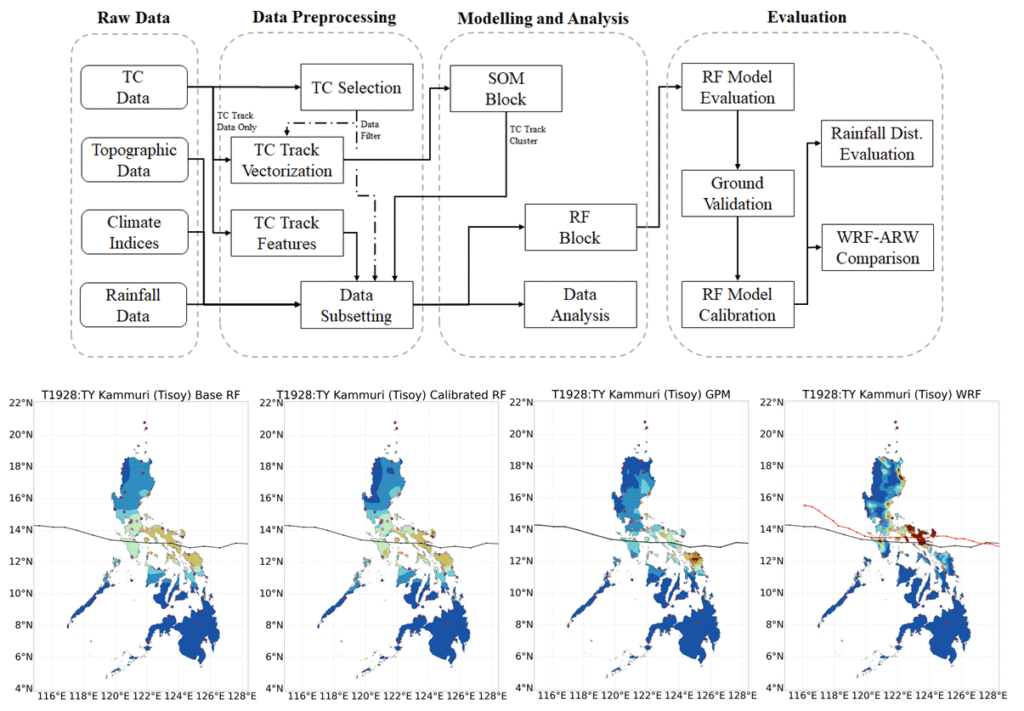The Philippines, a nation frequently battered by tropical cyclones, may soon have a powerful new tool to predict rainfall and mitigate disaster. Researchers at the University of the Philippines Diliman (UPD) have developed an artificial intelligence (AI) model that accurately forecasts rainfall patterns associated with typhoons. This innovation offers a quicker and more efficient alternative to traditional forecasting methods.
Cris Gino Mesias and Dr. Gerry Bagtasa from the UPD-CS IESM spearheaded the development. Their AI model analyzes past typhoon tracks and rainfall data to identify recurring patterns. These patterns let the model predict rainfall with impressive accuracy.
“Most rainfall predictions rely on dynamic models,” Dr. Bagtasa explained. “These are difficult to run.” They require significant computational power. The UP team’s AI model, however, can run on a laptop in minutes.

The AI model’s performance is comparable to existing dynamic models. It even shows better skill in predicting extreme rainfall events. Key factors influencing the AI’s predictions include the typhoon’s distance and duration. These factors determine the areas most affected by heavy rains.
Dr. Bagtasa notes the AI model isn’t perfect. However, it can provide disaster managers with more information. This allows for better preparation for impending hazards. The model can also be updated with new data to improve its accuracy.
It is important to note that the AI model is different from AI models like ChatGPT. Dr. Bagtasa stresses the importance of AI literacy. Some AI systems, like the one for weather forecasting, are useful and efficient. Others can consume a great deal of energy.
This study, titled “AI-Based Tropical Cyclone Rainfall Forecasting in the Philippines Using Machine Learning,” appears in Meteorological Applications. The DOST-ASTHRDP and DOST-PCIEERD supported the research. This promises to be a big step toward improved disaster preparedness in the Philippines. By leveraging AI, the country can better protect its citizens. It also aims to mitigate the devastating impacts of tropical cyclones.




